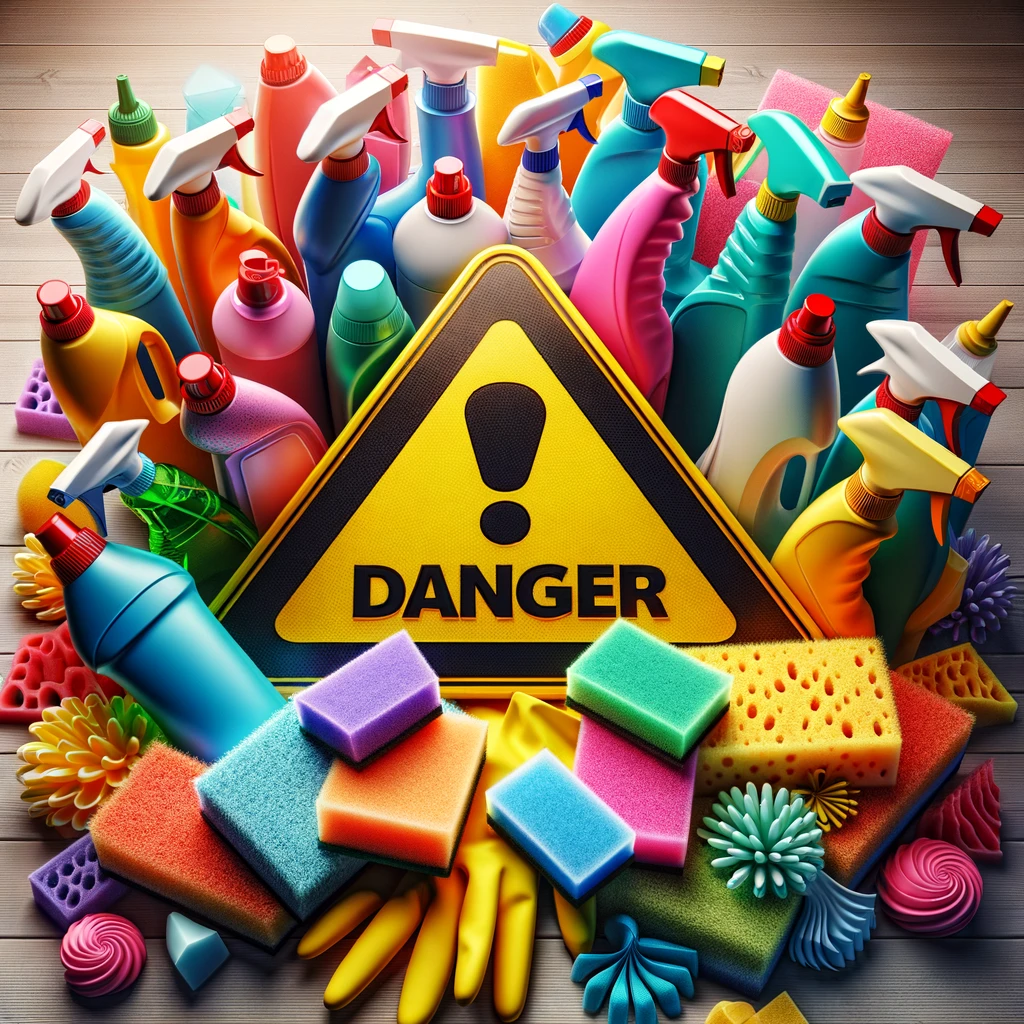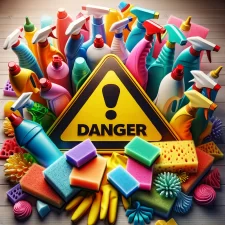
In the quest for a sparkling home, it’s easy to overlook the hidden dangers lurking beneath the surface of our routine cleaning habits. From the chemicals we use to the unseen mold in damp corners, cleaning is not just about making our homes look good—it’s also about ensuring they are safe environments for our families. As we become more aware of the health and environmental impacts of our choices, it’s crucial to adopt safe cleaning practices. Here are 10 safety measures to safeguard your health and enhance the effectiveness of your cleaning routine.
1. Read Labels Carefully
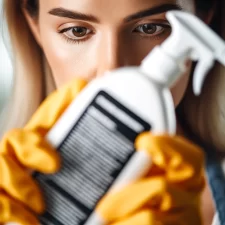
Cleaning agents are packed with chemicals that can be harmful if mishandled. Before using a product, take a moment to read the label and understand the instructions and warnings. This simple step can prevent skin irritations, respiratory issues, and accidental poisonings. Look for phrases like “ventilate the area” or “use gloves,” as these are key indicators of the precautions you need to take.
2. Ventilate Your Space
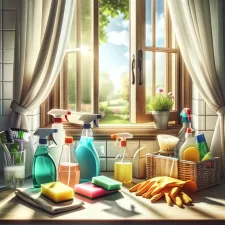
The fumes from cleaning products can accumulate, especially in small, enclosed areas, leading to headaches, dizziness, and other health problems. Always ensure that the room you’re cleaning is well-ventilated. Open windows and doors, and use fans to circulate fresh air. This will not only protect your health but also speed up the drying process, preventing the growth of mold and mildew.
3. Use Protective Gear
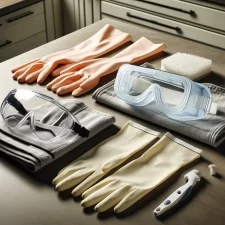
When handling strong cleaners, protective gear such as gloves, masks, and goggles can shield you from harmful chemicals. Skin contact with certain cleaning agents can cause irritations or allergic reactions, and inhaling their fumes can affect your respiratory system. Investing in a good pair of gloves and a mask is a small step that can have a significant impact on your safety.
4. Safe Storage Practices
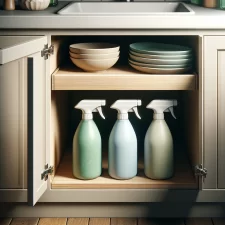
Children and pets are particularly vulnerable to the hidden dangers of improperly stored cleaning supplies. Ensure that all products are stored out of reach and in a locked cabinet if possible. Additionally, never transfer cleaning agents to unmarked containers or bottles, as this can lead to dangerous mix-ups and accidental ingestions.
5. Avoid Mixing Chemicals
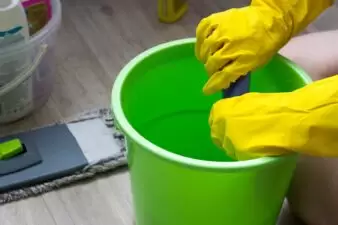
Combining different cleaning agents can produce toxic fumes or create hazardous substances. For example, mixing bleach with ammonia or vinegar can release chlorine gas, which can be extremely dangerous. Always use products as directed and avoid the temptation to combine them, even if you think it might boost their effectiveness.
6. Embrace Natural Alternatives

In recent years, there has been a shift towards using natural and homemade cleaning solutions, such as vinegar, baking soda, and lemon juice. These alternatives are not only safer for your health and the environment but can also be just as effective for many cleaning tasks. Incorporating these into your routine reduces your exposure to harmful chemicals and contributes to a healthier home.
7. Regular Maintenance of Cleaning Tools
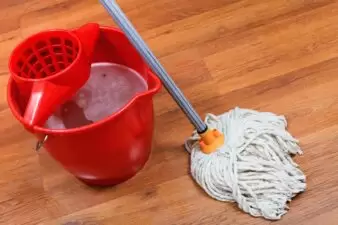
The tools you use for cleaning, such as mops, cloths, and sponges, can become breeding grounds for bacteria and mold if not properly maintained. Regularly wash and dry your cleaning tools and replace them as needed. This not only ensures that you’re not spreading germs around your home but also extends the lifespan of these tools.
8. Beware of Slip and Trip Hazards
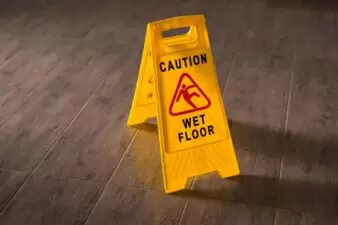
Wet floors and scattered tools can turn your cleaning session into a hazard zone. Always mop up spills immediately and keep the floor dry. When using ladders or step stools, make sure they are stable and on a flat surface to prevent falls. Organize your cleaning supplies and tools to avoid tripping over them.
9. Handle Electronics with Care

When cleaning around electronics, the risk of electric shock or damaging your devices is a “hidden danger” that’s often overlooked. Always unplug electrical items before cleaning them, and use a dry or slightly damp cloth to wipe them down. Avoid using spray cleaners directly on electronics, as the liquid can seep into the devices and cause damage.
10. Take Regular Breaks
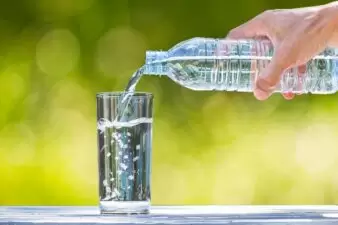
Cleaning can be physically demanding, and overexertion can lead to strains and injuries. Listen to your body and take regular breaks, especially during extensive cleaning sessions. Stay hydrated and use this time to ventilate the area or prepare for the next task safely.
Avoid the Hidden Dangers of Cleaning by Making Safety-Smart Choices
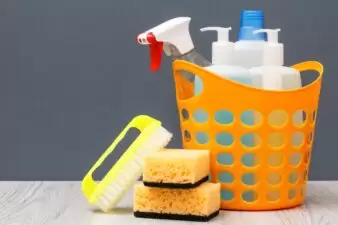
In conclusion, while cleaning is an essential part of home maintenance, it’s vital to approach it with an awareness of the hidden dangers it entails. By adopting these 10 safety measures, you can ensure that your home is not only clean but also a safe and healthy environment for you and your loved ones. Remember, a clean house is not just about appearance—it’s also about ensuring the well-being of everyone who lives in it.
Read More:
9 Key Ways You Can Invest in Your Home
Things in Your House You Can Sell Right Now
Catherine is a tech-savvy writer who has focused on the personal finance space for more than eight years. She has a Bachelor’s in Information Technology and enjoys showcasing how tech can simplify everyday personal finance tasks like budgeting, spending tracking, and planning for the future. Additionally, she’s explored the ins and outs of the world of side hustles and loves to share what she’s learned along the way. When she’s not working, you can find her relaxing at home in the Pacific Northwest with her two cats or enjoying a cup of coffee at her neighborhood cafe.

